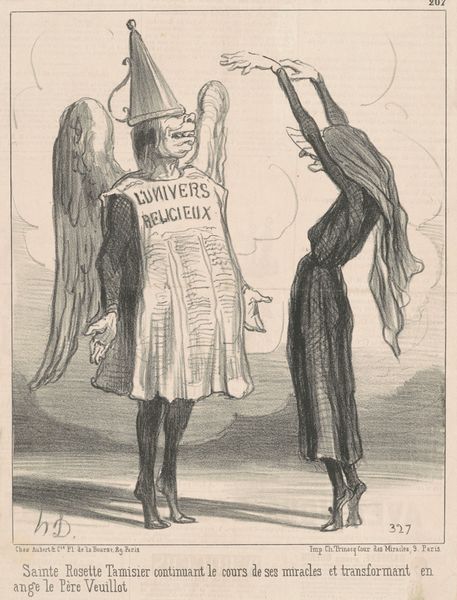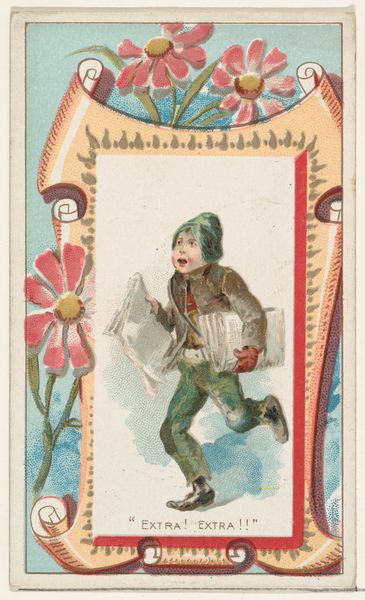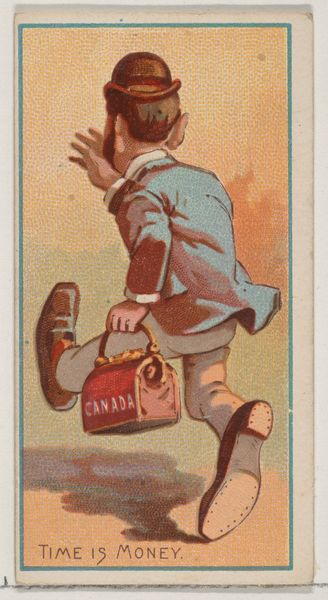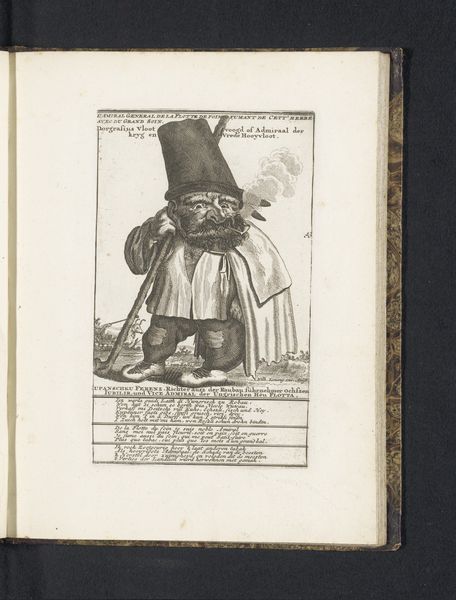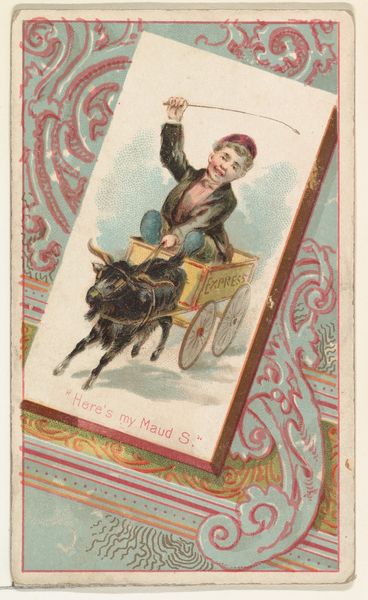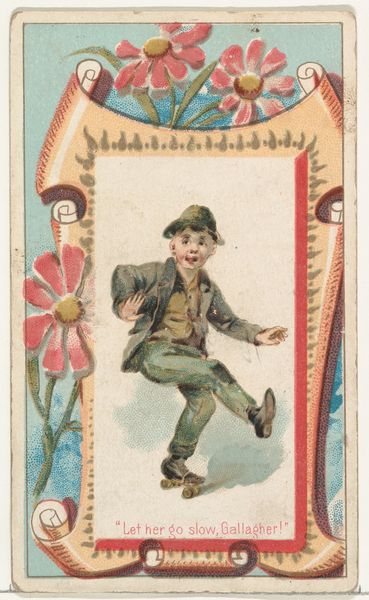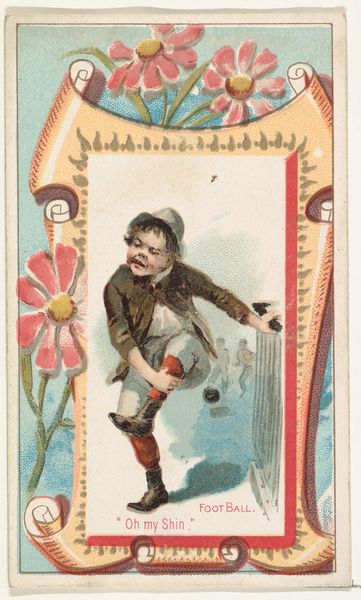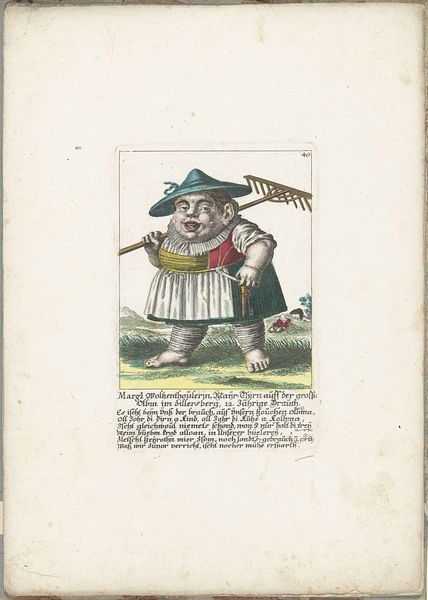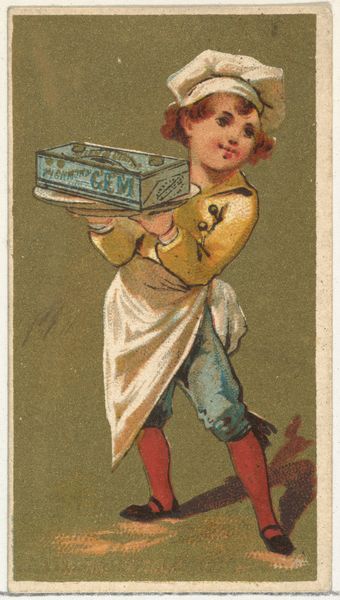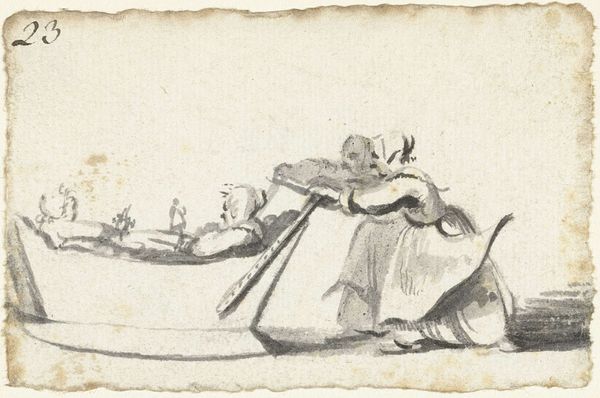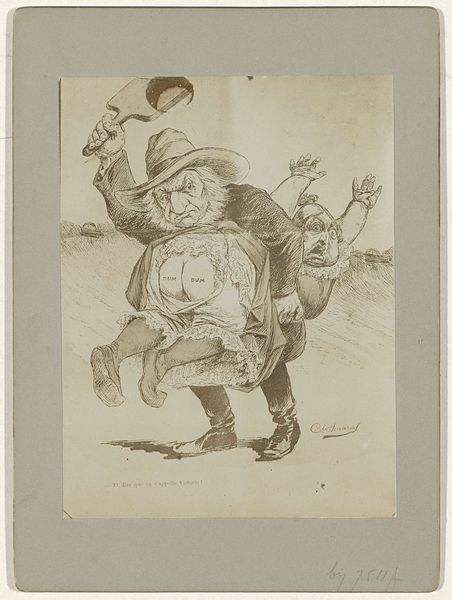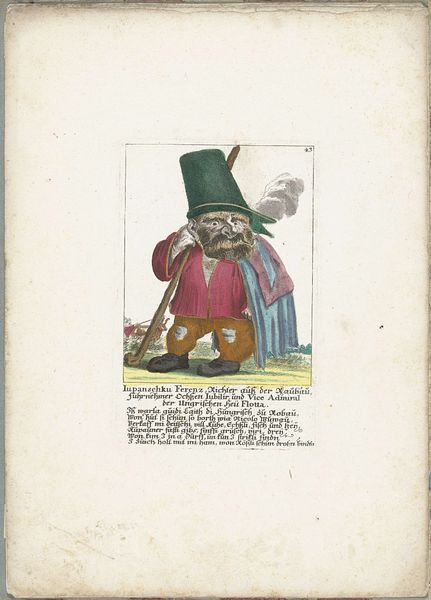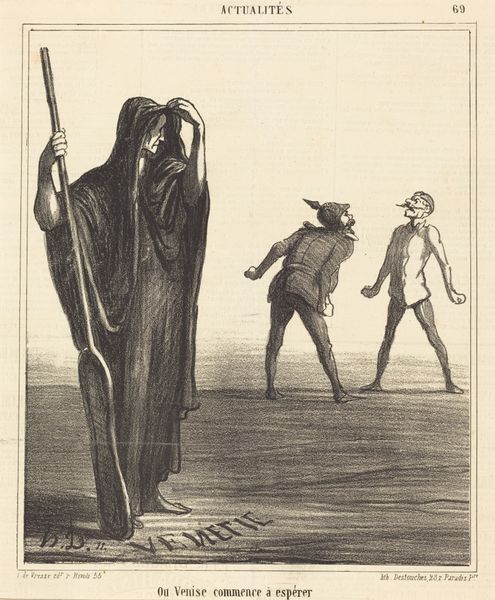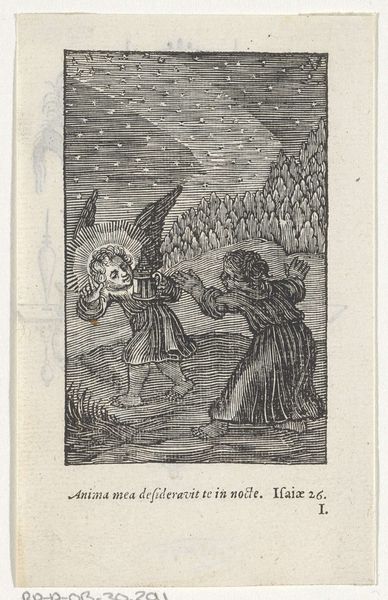
Wishing You a Happy New Year, from the New Years 1890 series (N227) issued by Kinney Bros. 1889 - 1890
0:00
0:00
drawing, coloured-pencil, print
#
portrait
#
drawing
#
coloured-pencil
# print
#
coloured pencil
#
men
Dimensions: Sheet: 1 1/2 × 2 3/4 in. (3.8 × 7 cm)
Copyright: Public Domain
Curator: Here we have a New Year's card created by the Kinney Brothers Tobacco Company, titled "Wishing You a Happy New Year," from their New Years 1890 series. It likely dates from between 1889 and 1890, a period when these cards were commonly distributed as promotional items. It’s composed using drawing, print and colored pencils and now resides in the collection of the Metropolitan Museum of Art. Editor: What strikes me first is how peculiar and somewhat unsettling this festive image is. The color palette is muted yet there is an intriguing narrative embedded in this simple composition that transcends your standard New Year’s greetings. Curator: Yes, it certainly departs from conventional sentimentality! The figures are evocative, aren't they? The clothing, the hats - they appear almost like characters plucked from a theatrical production. These playful figures are derived from folklore, reminiscent of jesters or carnival characters who, throughout history, signaled the ending of an old cycle and welcomed new beginnings. Editor: That's what I found so gripping about this visual message, the way in which this historical ritual feels like something almost occult, laden with symbolic and psychological drama. Note how they present their hopeful sign almost defensively? I find that really compelling. It evokes an ambivalence that mirrors the anxieties of turning the calendar year and the collective desires we hold. I'm also interested in the power dynamic implicit here. Who are these odd emissaries? Curator: Right, there’s an enigmatic aspect to it that is hard to ignore. One almost wants to decipher this coded message of this era gone by. This type of collectible card offered cultural context and social symbolism of its age. Its existence acknowledges how companies capitalized on festive traditions. Editor: Absolutely, these images circulated within a network of exchange, conveying values, expectations and assumptions of a consumer culture at the height of the Gilded Age. Despite its lighthearted appearance, I can’t help but think of how, beyond its immediate visual appeal, such an object speaks to the relationship between culture and commerce at the end of the 19th century, a time as volatile as our own. Curator: Indeed. The charm and unease it projects are uniquely revealing of its own period in history. Editor: It has really prompted me to consider those layers today. Thanks!
Comments
No comments
Be the first to comment and join the conversation on the ultimate creative platform.
